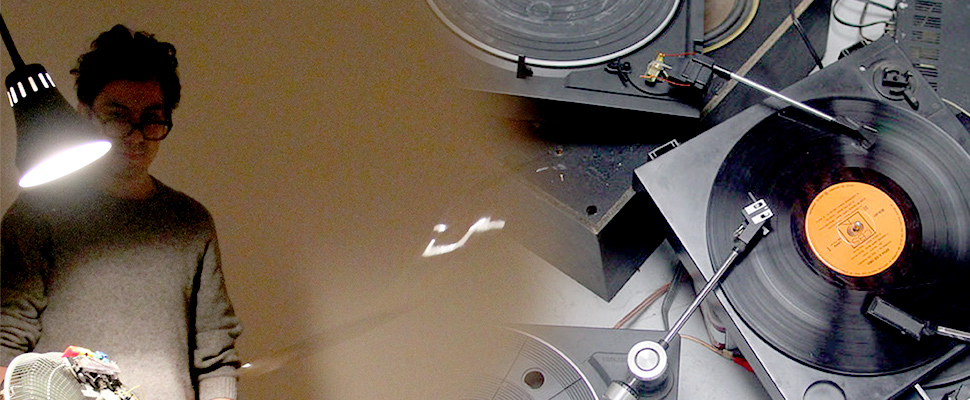Icaro Zorbar: the repairing artist
Listen to this article
Until next September 1, the artist Icaro Zorbar will exhibit the greatest work of his career at the Modern Art Museum in Bogotá

The viewer climbs a step, raises his eyes between a trash can and there, a small video is projected. A bee is examined by curious fingers and then the video shows the movement of a snail. To the side, just in another trash can that is over some speakers that emit a cryptic and tortuous sound, a drop of water falls on a series of aluminum sheets. The bottom of the can has moss: there is life, magic.
Leer en español: Icaro Zorbar: el artista reparador
This is the work of Icaro Zorbar, a Colombian who studied film and who makes pieces of art from obsolete and damaged objects, to which he prints movement again, transforming them, starting from a curiosity to learn by himself and through of the practice of reparation. Something that in some way is part of a Latino identity and that, according to the curator Julia Draganovic, is also the basis of his ethics.
"Here everyone fixes things. In my house, everything was fixed or they tried to fix it. This idea also starts from the Latin American context that has to do with recursion. Then I took it as a strategy. Initially, I did not think I was going to do art from that", says Icaro Zorbar.
But that concern did not arise overnight. When Zorbar was studying his master's degree at the National University, and while he was making progress on his film thesis, there was blackout that remained a day and a half. That event would be decisive so that during his master's studies, he would give himself the task of not continuing to work with the computer.
"I started to wonder what I enjoy and what I could do all my life. All the time I have been told that I break everything down and more curiosity arose to see the mechanisms of analogous technologies that are much easier to understand. That was what I started to do. That concern is what brings me to say 'let's play with this technology' ", says the artist, who at the same time applies this practice of repairing as a message to a consumer society, not only for the fact of recycling, but because he is also fully aware of the expense involved in creating.
Read also Coven in the 21st century: beyond witchcraft
From experience to Extrañando al Fantasma
The pieces of Icaro Zorbar are small monsters. But beyond its appearance, the meaning is that they intend to show or point to something. In Extrañando al Fantasma, apparatuses are not simple, divided mechanisms; the images or music they emit are fundamental to recreate that magical, ghostly idea that somehow reveals itself in one of its most well-known pieces: Te extraño: el Fantasma.
That's why, in Extrañando al Fantasma, "Zorbar 'recycles' a part of his previous work by adapting it to new contexts," says Draganivic, as he returns to the assisted works, in which the presence of someone who can stop or rewind a cassette and play it again.
As for the ghost, the devices and configurations are like a channel, a medium that calls it. In this, the idea of estrangement is essential. "You cannot miss something that has not been close. Missing arises from a distance and is something or someone that suddenly one does not know. It is a paradox and a question", says the artist.
For the portal Casas Reigner, Zorbar has a persistent motivation: the nature of human relationships and the relationship of the 'I' with the world through 'apparitions'.
In that sense, Zorbar says that the appearances are not necessarily a projection of a video or the reproduction of a bolero in a record player, they are the personal experiences that the spectator can feel when approaching the exhibition. "I do not like to explain the pieces too much because I consider the pieces as gestures that can encourage people to interpret or remember situations already lived, that clicks and a presence emerges, a personal experience, not a collective one. You gun the movie. "
LatinAmerican Post | María Alejandra Gómez
Translated from "Icaro Zorbar: el artista reparador"





